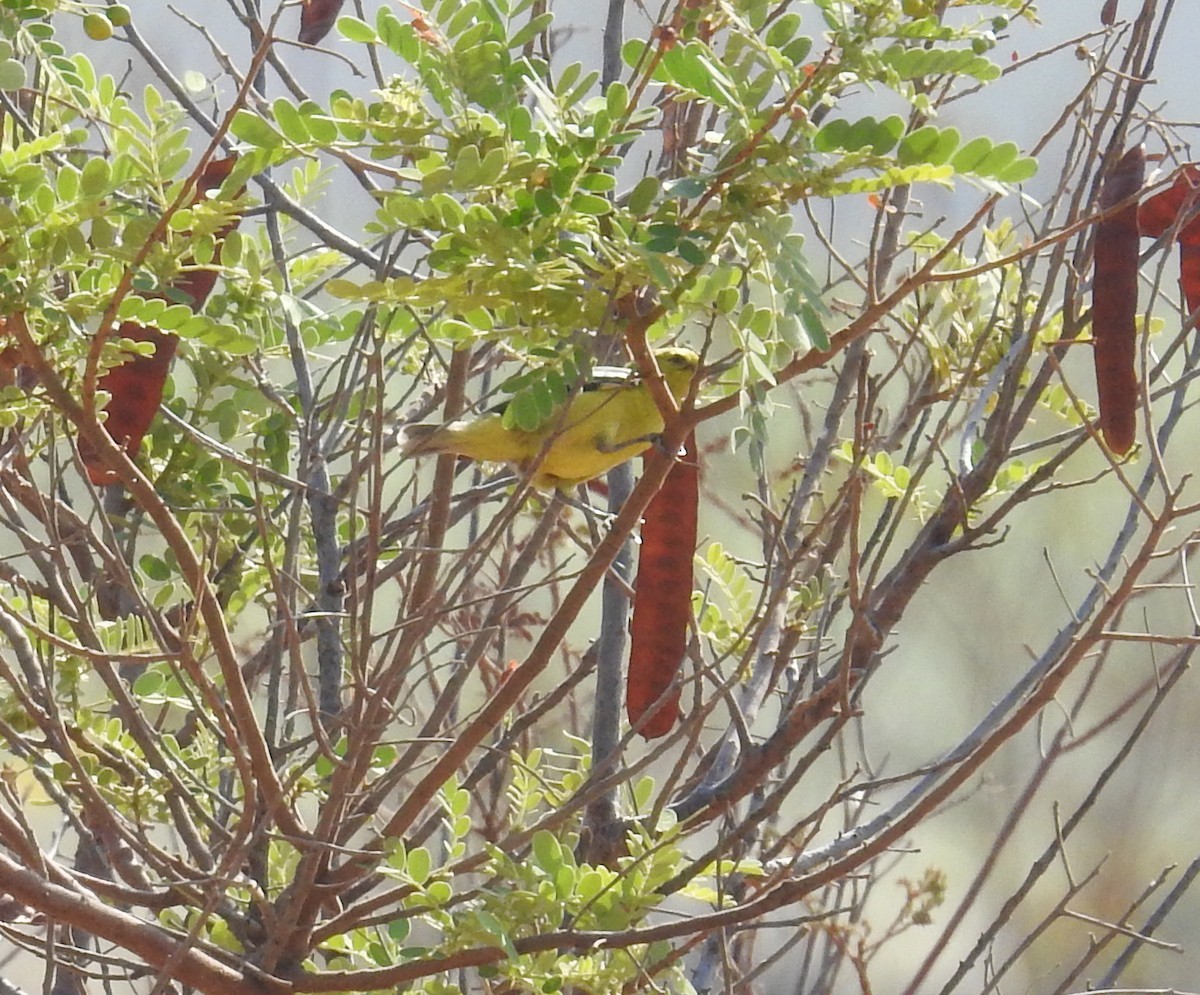White-tailed Iora
A species of Ioras Scientific name : Aegithina nigrolutea Genus : Ioras
White-tailed Iora, A species of Ioras
Botanical name: Aegithina nigrolutea
Genus: Ioras
Content
Description General Info
 Photo By Ashwin Viswanathan
Photo By Ashwin Viswanathan Description
Marshall's iora (Aegithina nigrolutea), also known as the white-tailed iora, is a songbird in the genus Aegithina found in parts of India and Sri Lanka. 
Size
13 cm
Nest Placement
Tree
Habitat
White-tailed Iora typically inhabits arid to semi-arid regions characterized by sparse scrublands, thorn jungles, and open woodlands with scattered trees. These environments are often dominated by various Acacia species, Salvadora persica, and other thorny bushes. These areas may be interspersed with grasslands and bare stony ground. Creepers commonly cover the vegetation during the wet monsoon season, providing food sources for white-tailed Iora. Its habitat is consistent year-round, enduring extreme temperatures and a distinct dry season with rainfall concentrated between June and September.
Dite type
Insectivorous
General Info
Feeding Habits
Bird food type
Distribution Area
The status of the species has been debated and has only recently been given full species status. Earlier suggestions have been that it was a clinal variant of the common iora Aegithina tiphia. The diagnostic features of the species are the short wing and tail; white edging to tertials converging broadly at the tip, versus tertial tips black to only narrowly white in tiphia and a smaller and shorter bill than tiphia from any part of India. The vocalizations are also different. The species is best known from northwestern India, however only a few verified specimen records exist from southern India. It is now also known from Sri Lanka. There are several races of the common iora that may appear similar to this species: Specimens showing nigrolutea characters collected within the range of Aegithina tiphia may be variants of the latter; such specimens have been obtained from southern Bihar, West Bengal, Khandesh, Tamil Nadu and Mysore. Two adult specimens collected from Gwalior are intermediate between Aegithina tiphia humei and Aegithina nigrolutea and one specimen from Ceylon is intermediate between the latter and Aegithina tiphia multicolor. The status of Aegithina nigrolutea as a distinct species is not settled. It is a problem that presents a challenge to geneticists and field workers alike Salim Ali collected a specimen in the Biligirirangan Hills which was commented upon by Hugh Whistler:One of the Biligirirangan birds, male ,15 September 1934 from Satyamangala (2,000') and evidently by the softness of the skull and the narrow tail feathers an immature bird, could not be distinguished from A. nigrolutea as the central tail is washed with white. I cannot believe that this is really nigrolutea which has not been recorded from nearer than northern Khandesh and Sambalpur. It is evidently an interesting case of individual variation showing how nigrolutea had its origin. Whistler's comments have been subsequently debated and Daniel Marien notes that the southern boundary of the species is not well understood and further notes that the Biligirirangans specimen commented upon by Whistler was identified positively by Biswamoy Biswas as a nigrolutea. Adult females of both species are entirely green above (except for a gray and white tail in nigrolutea) and yellow (dull in winter, brighter in spring) below. The juvenal and first-winter plumages in both sexes of both species are similar to their adult female plumages. First-year birds are best recognized by the possession of more pointed and somewhat narrower tail feathers. Walter Koelz collected two adult specimens of the species at Salem and the distribution range of the species is believed to overlap significantly with that of A. tiphia. Subadults (first-winter) and adults of both species undergo an incomplete spring molt in which usually only the body feathers are replaced, but first-year birds do not at that time acquire the full nuptial dress. This incomplete spring molt seldom involves the tail, but occasionally some males of tiphia are found to be molting the rectrices, with green quills being replaced by black ones. This condition exists in several subadult males taken in late May and early June in Nepal; it seems unlikely that this represents an early fall molt, the molt in which subadult males normally acquire the black tail of the adult. No black-backed, green-tailed males of tiphia have been reported. It is not clear whether birds in first-year plumage breed, or not. The nuptial plumage of both species is acquired by means of an incomplete molt before the breeding season. In males of nigrolutea and in some populations of tiphia, birds in this plumage have a golden yellow chin and throat and a variable amount of black on the dorsum; in Himalayan, Chinese, north Siamese, Indochinese, Javan, Balinese, Bornean, and Palawan forms of tiphia the males have a green-backed, feminine type of plumage. Adult males of both species are black-tailed at all seasons, except on Java and Bali where tiphia males are always completely henfeathered; in nigrolutea, at the other extreme, even subadult males have a black and white tail. 

 Photo By Ashwin Viswanathan
Photo By Ashwin Viswanathan Scientific Classification
Phylum
Chordates Class
Birds Order
Perching birds Family
Ioras Genus
Ioras Species
White-tailed Iora